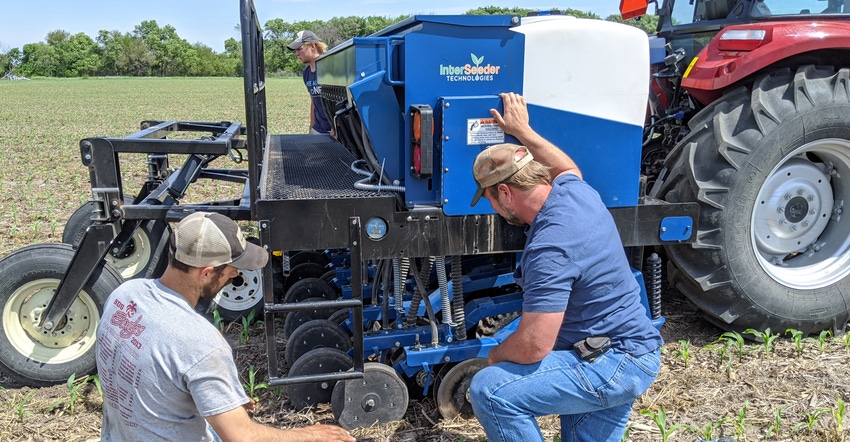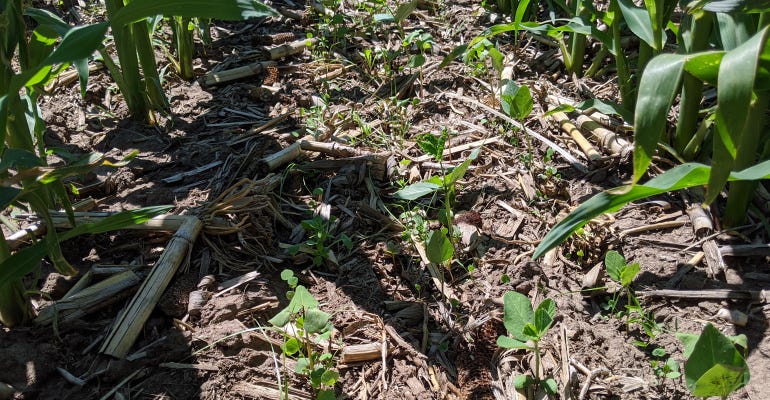August 7, 2020

The interest in cover crops has increased in the past five to 10 years as USDA's Natural Resources Conservation Service and some natural resources districts in Nebraska are providing cost-share programs or offering incentives to use cover crops.
Although acreages of cover crops have been steadily increasing in the past five years, the percentage of cover crops used on cropping acres is still relatively small. The 2017 Census of Agriculture indicated that about 748,000 acres of cover crops were grown by about 38,000 operators on about 22 million acres of cropland across Nebraska in 2017.
Cover crops were planted on about 3.4% of cropland acres in Nebraska. Cover crops as a component of cropping systems generally were first evaluated by farmers investigating their use. With increased interest in cover crops, research then was initiated at the University of Nebraska-Lincoln and several other land grant institutions across the Midwest.
Limitations and opportunities
A major limitation of getting the full benefit of cover crops, especially in Nebraska, is the short growing season after corn and soybean harvest. Many farmers do not think planting a cover crop this late is feasible, and benefits from the cover crops are limited.
Farmers that have wheat as a part of their rotation have the opportunity to plant cover crops much earlier, immediately after wheat harvest, and are maximizing biomass production. With Nebraska being a major cattle-producing state, the opportunity to use cover crops as annual forages for cattle has increased their use across Nebraska, and provided an opportunity to get an immediate return from the cover crop as forage.
Cover crops have been flown on into standing corn and soybeans with an airplane or helicopter over the years. Sometimes, in wet years, this has been successful, but in dry years without rainfall after being sown, little if any cover crops are established. Timing can be critical. Drilling cover crops after harvest has been the most successful method of seeding cover crops to date.
Some farmers will have an operator planting cover crops, usually a cereal grain (i.e. cereal rye, triticale or wheat), right behind the combine. In some recent years, such as 2018, fields were very wet, and it was a real challenge to get cover crops planted. Cattle producers are using cover crops the most, by grazing cover crops or cornstalks in the fall and cover crops in the spring with cow-calf pairs. Other cattlemen will put their fall calving cows right in cover crops from the fall and into the spring.

INTERSEEDED MIX: Cover crop mix is interseeded between corn rows in central Nebraska.

Nebraska Extension also is evaluating yields of corn and soybeans of different relative maturities. Researchers are evaluating if shorter-season corn hybrids or soybean varieties will yield similar to the longer-season hybrids and varieties.
If a shorter-season corn hybrid could be harvested 10 days earlier, then a cover crop could be planted earlier and get off to a much faster start. Research at the University of Nebraska has shown cereal rye planted a couple of weeks earlier in the fall will have greater production in the spring for spring grazing of cattle. Some farmers may harvest some of the cover crop in the spring for forage as hay or haylage.
The more innovative system that is being investigated through on-farm research in central Nebraska is interseeding of cover crops into corn. Farmers are interseeding into corn with various cover crops at the V4 to V5 stage of growth.
This year, Extension educators Jenny Rees and Steve Melvin are cooperating with the Nature Conservancy and area farmers interseeding cover crops. Videos showing and explaining this project can be found at cropwatch.unl.edu/virtual-field-days. This is part of the On-Farm Research Network.
Last year, Rees and Dean Krull, UNL research technologist, conducted on-farm research with interseeding into corn. You can find the results of these experiments online at cropwatch.unl.edu/on-farm-research.
Some farmers are even planting corn in 60-inch rows and planting cover crops between the rows. There are number of different planters being evaluated for interseeding, and it is being done in several states. Some farmers have shown that while corn yields less in 60-inch rows, the cover crops do so well that the lower yields are offset by the grazing benefit from the cover crops.
Know your goals
Whatever method you use for cover crop establishment, it is most important to know your goals, plan accordingly and follow management strategies to meet these goals. At 2019 Husker Harvest Days, a survey was conducted. The survey indicated cover crops are used for grazing or as a forage, erosion control, weed suppression and soil health, or a combination of these uses.
With the number of acres of cover crops increasing and with farmers’ ingenuity, equipment and systems will be developed for interseeding of cover crops to be a sustainable practice in integrated crop and livestock systems in Nebraska in the future.
Lesoing is a Nebraska Extension educator.
You May Also Like




